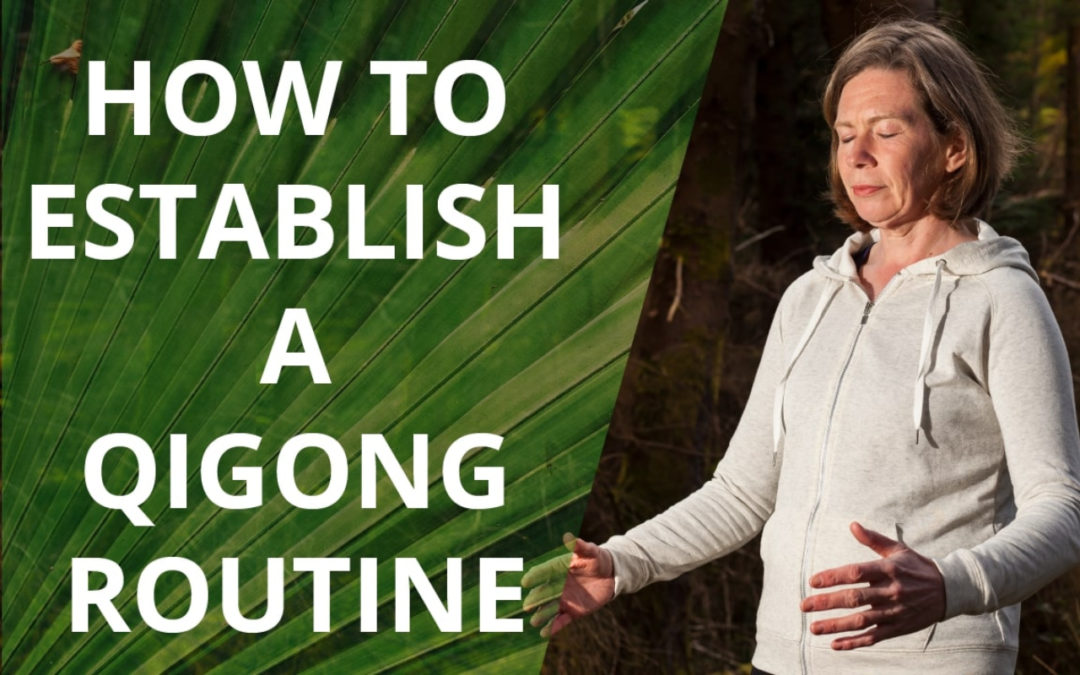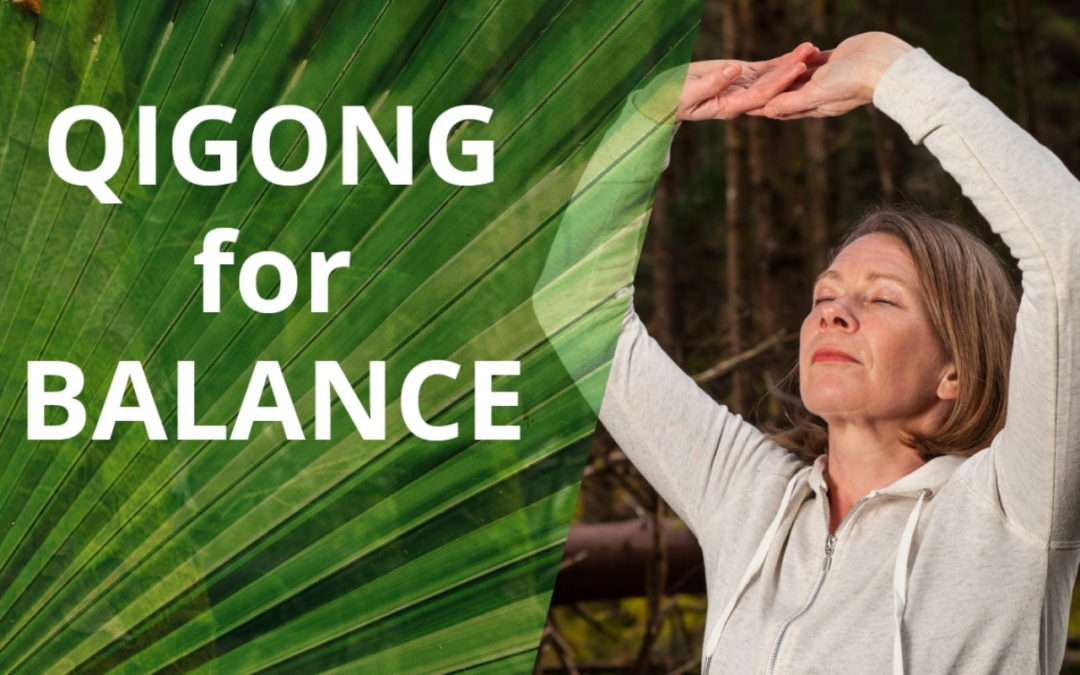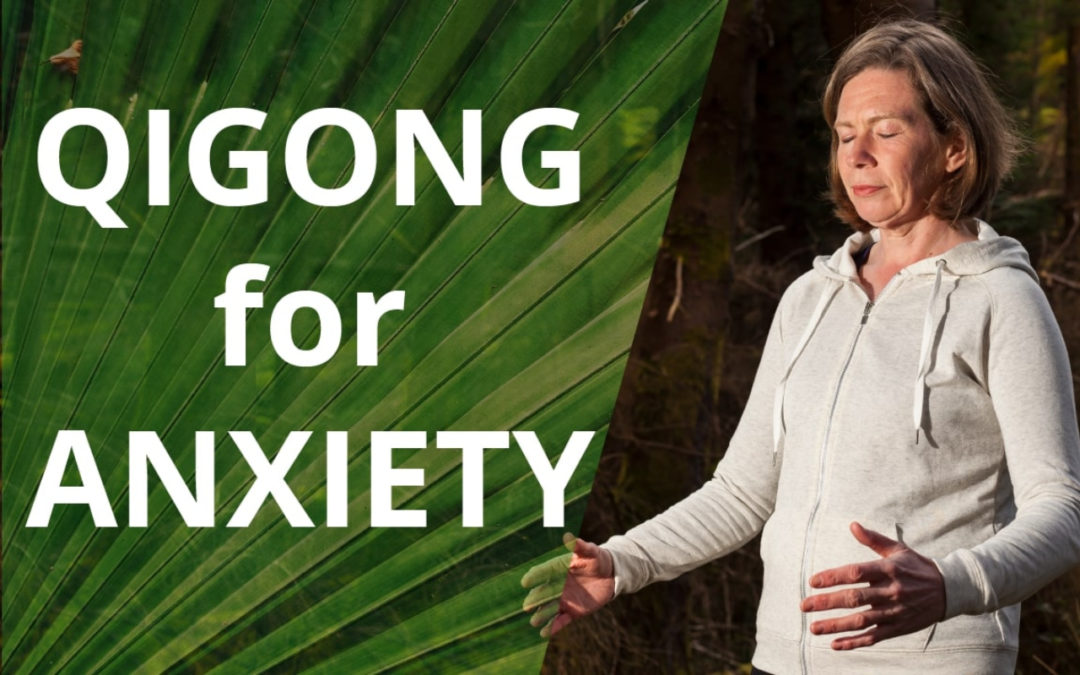
by janicetucker | 7 Feb 2018 | Qigong, Qigong & Emotional Issues, Qigong Meditations & Breathing, Qigong Routines
One of the most common complaints I hear in my acupuncture clinic is that of insomnia and poor sleep. The subject of today’s post is how to use Qigong for insomnia and sleep difficulties.
Clients in my acupuncture clinic often say to me:
“I’m not sleeping as I’m too stressed”,
“I have difficulty getting off to sleep and then feel exhausted”,
“My thoughts play over and over in my head which stops me from sleeping”,
“I wake up at 3 am and then can’t get back to sleep as my mind is too busy”.
Sound familiar? If so then this video will show you how to use Qigong for insomnia and sleep difficulties. With a little practice you will soon notice an improvement in your sleep and therefore your energy levels the next day!
Janice Tucker is a practitioner of Traditional Chinese Medicine and Medical Qigong, and the founder of the Space To Relax online programme of Qigong video lessons.
Please don’t forget to subscribe to my YouTube channel by clicking the red “Subscribe” button. That way you won’t miss my regular videos which are full of useful health enhancing tips. These videos will help you to enhance your health and prevent illness from arising in the first place. Also please give this video a “Like” if you found it informative.
The Problem – Why Do We Suffer From Insomnia?
In terms of Traditional Chinese Medicine it is only possible for us to experience full and restful sleep when our mind is calm. A calm and peaceful mind is essential for calm and peaceful sleep. If our minds are too busy then we will find it difficult to sleep, no matter how exhausted we are going to bed.
The Solution – Qigong For Insomnia and Sleep Difficulties
One of the main benefits of Qigong practice is that it helps to calm and clear our minds. Qigong brings us into the present and allows us to focus clearly on what we are doing. Many of the physical exercises in Qigong are extremely relaxing so this in turn helps to calm our mind.
Qigong also requires us to pay conscious attention to our breath. Breathing usually takes the form of what is called “Abdominal Breathing”. During this method, as you breathe in your belly expands and as you breathe out your belly shrinks and this is extremely relaxing.
The key to using Qigong for insomnia is to perform exercises which calm your mind, especially before bed. It’s as simple as that. The more you practice these exercises, the better quality and quantity of sleep your will enjoy!
What Do I Do Next?
If you would like to start using Qigong for insomnia then:
- Head over to my Space To Relax homepage. Scroll to the bottom of the homepage to sign up for a free audio meditation called “Calm Your Busy Mind in 8 Minutes“. This is the perfect breathing and visualisation method to help you to sleep better. On the homepage you can also sign up for a free 3 part video series of Qigong lessons. This will take you even further towards calming and clearing your mind so that you can enjoy peaceful sleep.
- Subscribe to my YouTube channel by clicking the red “Subscribe” button. That way you won’t miss my regular videos which are full of useful health enhancing tips. Also please give this video a “Like” and share with me in the comments box what you do to get off to sleep at night.
- Join my free Facebook group, “Space To Relax Free Group” and leave any comments or questions for me there. I’ll be happy to answer them. Also, by joining this group, you will receive regular posts of Qigong articles and videos with really useful tips about how to use Qigong to improve your state of health.
- Watch my previous video on “How To Calm Down With Qigong“. This will give you even more tips on Qigong for insomnia by showing you how to calm your mind and bring it into a restful state to be able to sleep at night.
home

by janicetucker | 9 Nov 2017 | Qigong, Qigong Practice Guidelines & General Information, Qigong Routines
“I’d love to do Qigong but how do I find the time to practice regularly?”. If you are someone who struggles with finding the time for yourself then you’re not alone. I understand exactly how you feel as sometimes I feel like this myself. We are all busy and sometimes life can get in the way of our best intentions. What I’ll be sharing with you in this post is how to make it easier to create a regular habit of Qigong and how to establish a Qigong routine which does not take too much time out of your busy schedule.
Janice Tucker is a practitioner of Traditional Chinese Medicine and Medical Qigong, and the founder of the Space To Relax online programme of Qigong video lessons.
Please don’t forget to subscribe to my YouTube channel by clicking the red “Subscribe” button so you don’t miss my regular videos which are full of useful health enhancing tips. These videos will help you to benefit your health and prevent illness from arising in the first place. Also please give this video a “Like” if you found it informative.
5 Tips On How To Establish A Qigong Routine
1. Integrate Qigong In To Your Day
If you are so busy that you cannot conceive where to find time to practice Qigong then this post was made for you! There is a solution. It’s not ideal as even 5 minutes of regular practice time is beneficial. However many of the Qigong exercises I teach do not require dedicated practice time. You can easily integrate them in to your day instead. Abdominal breathing is the perfect example of this. You can do it while standing in a queue, driving, walking the dog or watching TV.
2. Make The Decision To Practice
The decision to practice Qigong has to come from you. By making this commitment to yourself then you are more likely to be able to maintain your Qigong routine. If you are too busy to practice then you are precisely the person who can benefit most from regular practice because it actually frees up more time for you. Because Qigong helps to calm and focus your mind, you will be more efficient at carrying out your day to day tasks, in contrast to chasing your tail without clarity or focus. Your increased efficiency means that you will get more done in less time, leaving you with time to spend doing fun things with friends and family!
3. What Is Your Why?
Why do you want to practice Qigong regularly?
What are you struggling with right now?
How does this struggle affect you?
How do you think Qigong will help you with this?
What will that mean for your life, relationships, health and job?
Take some time to sit and write down the answers to these questions. They will give you a reason to practice Qigong and establish a Qigong routine. Whenever you feel as though you can’t be bothered to practice then refer back to your answers. They will give you your “Why” and your inspiration to get out there and practice!
4. Choose A Good Location In Which To Practice
Choosing somewhere in which you feel comfortable is very important for Qigong practice. Ideally this will be somewhere in nature like a forest or beach. However, if you live in the city it could be somewhere like a park or next to a river or canal. The location you choose also needs to be somewhere which is easy for you to get to on a daily basis. You will not be motivated to practice daily if your favourite place is half an hour away by public transport! Choosing a place that is close by and easy to get to will maximise your chances of practising daily.
5. Establish A Regular Time Of Day To Practice
The best time to practice Qigong is at a time that suits you. Often first thing in the morning is the best time for most people as it is quieter and you have also set yourself up in the best way possible for the rest of your day. However, night time might suit some of you, depending on your routine.
Practising at the same time every day helps you to develop the habit, just like cleaning your teeth, so you are less likely to skip a day once this habit is established.
What Do I Do Next?
1. Head over to my Space To Relax homepage to sign up for a free 3 part video series of Qigong lessons.
2. Please don’t forget to subscribe to my YouTube channel by clicking the red “Subscribe” button. Then you won’t miss my regular videos which are full of useful health enhancing tips. Also please give this video a “Like” if you learned more about how to establish a Qigong routine (and share with any friends or family, especially the more elderly people you know who may not be so steady on their feet).
3. If you are on Facebook head over to my free group, “Space To Relax Free Group” and leave any comments or questions for me there. I’ll be happy to answer them. Also, by joining this group, you will receive regular posts of Qigong articles and videos with really useful tips about how to use Qigong to improve your state of health.
home

by janicetucker | 23 Oct 2017 | Qigong, Qigong Routines, Qigong To Help Manage Specific Health Conditions
Nearly all Qigong methods combine an element of balance, except the ones where you are lying down meditating. I mentioned this in a previous video blog about the differences between Qigong and Yoga. In this post I’ll tell you my three best tips which show you how to use Qigong for balance. This is important for the elderly in helping to prevent falls. Balance is also important for athletes where a good sense of balance can make all the difference to athletic performance.
Janice Tucker is a practitioner of Traditional Chinese Medicine and Medical Qigong. She is also the founder of the Space To Relax online programme of Qigong video lessons.
Please don’t forget to subscribe to my YouTube channel by clicking the red “Subscribe” button if you head over to YouTube. That way you won’t my regular videos which are full of useful health enhancing tips. These videos will help you to benefit your health and prevent illness from arising in the first place. Also please give this video a “Like” if you found it informative.
3 Ways To Use Qigong For Balance
1. Relaxation
The more relaxed you are the more you can find your natural balance and centre of gravity. Holding tension in your muscles causes imbalance. Refer to the previous video on Qigong Standing Posture to learn more details about how to maintain balance and relaxation in this posture.
2. Do Exercises To Promote Leg Strength
Any standing posture will help to increase the strength of your legs if practiced regularly over time. A good example you can look at is one of the 8 Pieces of Brocade (Ba Duan Jin) exercises called “Open Eyes Wide With Clenched Fists” which is performed from a horse stance position. This stance will help to develop the strength of your thighs giving you a more solid and stable foundation leading to an improved sense of balance.
3. Learn How To Stand Properly
Learning how to stand properly by “regulating” the position of the neck and lower spine will improve your balance. From there you can then walk with more confidence and an improved sense of balance.
If you practice these three methods then your overall movement will be more solid and stable resulting in improved balance and confidence as you move around.
What Do I Do Next?
1. Head over to my Space To Relax homepage to sign up for a free 3 part video series of Qigong lessons.
2. Please don’t forget to subscribe to my YouTube channel by clicking the red “Subscribe” button. Then you won’t miss my regular videos which are full of useful health enhancing tips. Also please give this video a “Like” if you learned more about how to use Qigong for balance (and share with any friends or family, especially the more elderly people you know who may not be so steady on their feet).
3. If you are on Facebook head over to my free group, “Space To Relax Free Group” and leave any comments or questions for me there. I’ll be happy to answer them. Also, by joining this group, you will receive regular posts of Qigong articles and videos with really useful tips about how to use Qigong to improve your state of health.
home

by janicetucker | 12 Oct 2017 | Qigong, Qigong Routines, Qigong To Help Manage Specific Health Conditions
Many people suffer with cold hands, especially in the winter. The result is often uncomfortable at best and excruciatingly painful at worst. Having to put up with cold hands decreases our flexibility and dexterity. For any of you with joint stiffness or arthritic conditions the cold can make your hands feel even more inflexible and stiff. In this post I’ll be showing you how to use Qigong for cold hands, how to warm your hands and what to do to prevent your hands from getting cold in the first place.
Janice Tucker is a practitioner of Traditional Chinese Medicine and Medical Qigong, and the founder of the Space To Relax online programme of Qigong video lessons.
Please don’t forget to subscribe to my YouTube channel by clicking the red “Subscribe” button when you head over to YouTube so you don’t miss my regular videos which are full of useful health enhancing tips. These videos will help you to benefit your health and prevent illness from arising in the first place. Also please give this video a “Like” if you found it informative.
Qigong For Cold Hands and 3 Ways to Warm Them
1. Circles Exercise
This is Lesson 2 in my free 3 part video series of Qigong lessons. The circles exercise is a perfect Qigong for cold hands method as your focus in on your hands. Where our mind goes, the Qi follows and one of the functions of Qi is to warm us up! To learn this exercise simply read the details at the end of this article on how to sign up for your free video series.
2. Discharge Waste Qi With Vibration
This is Lesson 3 in my free 3 part video series of Qigong lessons. The principle here is to think of ridding cold from your hands as you vibrate the body and exhale. To learn this exercise keep reading to the end to get details on how to sign up for the free video series.
3. Any Physical Exercise
Physically moving the body is a fantastic way to send warmth to your extremities and thereby warm your hands. Exercise promotes circulation and will have the effect of warming the whole body, including the hands.
What To Do To Prevent Cold Hands
1. Never wash your hands or prepare vegetables in cold water as this is just putting cold on top of cold if you are prone to cold hands. When washing your hands always let the tap run warm before placing your hands under the water. When preparing vegetables do so in warm water and then rinse them in cold water at the end.
2. Wear gloves when you go out in to cold weather. It seems logical to do this but how many of us actually remember and wear gloves as a habit?
3. Eat regularly and often as eating generates energy (and warmth). In particular, eat warm foods in the winter. I often get cold hands when I need to eat. As soon as I’ve eaten something warm my hands become toasty again!
What Do I Do Next?
To learn the exercises mentioned above and use Qigong for cold hands go to the Space To Relax homepage. There you can sign up to receive three free video lessons which will be delivered to you by e-mail over the course of a few days. The Circles method is Lesson 2 and Discharge with Vibration is Lesson 3.
Please don’t forget to subscribe to my YouTube channel by clicking the red “Subscribe” button. Then you won’t miss my regular videos which are full of useful health enhancing tips. Also please give this video a “Like” if you learned more about Qigong for immunity boosting (and share with any friends or family you know who suffer with cold hands).
If you are on Facebook head over to my free group, “Space To Relax Free Group” and leave any comments or questions for me there. I’ll be happy to answer them. Also, by joining this group, you will receive regular posts of Qigong articles and videos with really useful tips about how to use Qigong to improve your state of health.
home

by janicetucker | 2 Oct 2017 | Qigong, Qigong Routines, Qigong To Help Manage Specific Health Conditions
The students in my recent Qigong live workshop were so pleased to learn some simple methods to enhance their immunity. Now they can better resist coughs, cold and other nasty infections coming into the autumn. Even if you don’t live in the northern hemisphere as I do here in Ireland, please watch the accompanying video. We all know that boosting our immunity to its optimum is valuable thing to at any time of the year. In the video next to this text I’m going to give you some tips on how to use Qigong for immunity ehnancement. I’ll be showing you how to supercharge your immune system with quick and simple methods. You can integrate these methods into your daily activities very easily so there is no excuse for not doing them!
Janice Tucker is a practitioner of Traditional Chinese Medicine and Medical Qigong. She is also the founder of the Space To Relax online programme of Qigong video lessons.
Please don’t forget to subscribe to my YouTube channel by clicking the red “Subscribe” button above so you don’t miss my regular videos which are full of useful health enhancing tips. These videos will help you to benefit your health and prevent illness from arising in the first place. Also please give this video a “Like” if you found it informative.
Qigong For Immunity – My Top 4 Tips
1. Abdominal Breathing
a) Inhalation. In order to enhance your immunity think of inhaling clean, fresh, energising air that will improve your lung function, opening up your respiratory channels so that you can increase your resistance to disease.
b) Exhalation. As you exhale think of anything you don’t want in your body, especially if you have an infection, e.g. phlegm, cough, sinus pressure. Breathe out, using your mind to expel what you don’t want.
For more detail on this method, please click here to view my previous video on “Get Rid of the Negative with Qigong Breathing Exercises”.
2. One of the Six Healing Sounds
This is a “discharging” method which means you can use it to rid any sick or waste Qi from your body. In this method you use a specific sound to rid sick Qi from the Lung system. The sound is “tssss” and it creates a specific frequency which resonates with your lung system. In this way you can help enhance your immunity.
a) Breathe into the lower belly (Dan Tian) for 3 breaths.
b) Think of the lungs for 3 breaths.
c) Exhale each time saying the “tssss” sound as you turn to the side looking over your shoulder. As you do this think of expelling waste or sick Qi from your lungs.
You can perform this method from a standing position or as you are walking.
3. Discharge With Vibration
This is a very quick and easy Qigong for immunity method in which you simply vibrate the body to expel any sick or waste Qi from your body. It is Lesson 3 in my free 3 part Space To Relax video series (see below for details on how to access this).
4. Get Advice From Your Practitioner or Local Health Store
The ideal time to book a course of treatment with your Chinese medicine practitioner or acupuncturist is before your immune system is challenged. Make use of your healthcare practitioner or consult with your local health store to get advice on the best immune boosting herbs and supplements.
What Do I Do Next?
To learn even more tips on Qigong for immunity enhancement go to the Space To Relax homepage. There you can sign up to receive three free video lessons which will be delivered to you by e-mail over the course of a few days. Abdominal breathing is Lesson 1 and Discharge with Vibration is Lesson 3. Also, for the free audio meditation “Calm Your Busy Mind In 8 Minutes” scroll to the bottom of the Space To Relax homepage.
Please don’t forget to subscribe to my YouTube channel by clicking the red “Subscribe” button. Then you won’t miss my regular videos which are full of useful health enhancing tips. Also please give this video a “Like” if you learned more about Qigong for immunity boosting.
If you are on Facebook head over to my free group, “Space To Relax Free Group” and leave any comments or questions for me there. I’ll be happy to answer them. Also, by joining this group, you will receive regular posts of Qigong articles and videos with really useful tips about how to use Qigong to improve your state of health.
home

by janicetucker | 24 Aug 2017 | Qigong, Qigong & Emotional Issues, Qigong Routines, Qigong To Help Manage Specific Health Conditions
When we feel anxious that is a sign that we are concerned about something in the future. If it’s a past negative event we are thinking of then the feeling is often one of resentment. In this post I’m going to give you some tips as to how to use Qigong for anxiety reduction. Below you will find my 3 top tips to use Qigong for anxiety.
Janice Tucker is a practitioner of Traditional Chinese Medicine and Medical Qigong, and the founder of the Space To Relax online programme of Qigong video lessons.
Please don’t forget to subscribe to my YouTube channel by clicking the red “Subscribe” button above so you don’t miss my regular videos which are full of useful health enhancing tips. These videos will help you to benefit your health and prevent illness from arising in the first place. Also please give this video a “Like” if you found it informative.
What Is Anxiety?
When we feel anxious we may feel the following sensations:
- Butterflies in the stomach or heart area
- Palpitations or racing heartbeat
- Clammy palms
- Shortness of breath
- Fear
- Withdrawn
- Can’t face people in social situations
Our anxiety will often keep us awake at night and rob us of peace of mind. It may cause us to think negatively about situations. If you experience any of these feelings then the video here will help you to get started on the path to annihilating anxiety.
3 Methods Using Qigong For Anxiety Reduction
1. The “One Breath” Method
Use this method of taking one abdominal breath into the belly and then breathing out. Consciously do this and you will find it very quickly calms your mind and leaves you feeling grounded.
2. Relax, Expand and Nourish The Heart Method
This simple, relaxing Qigong method is available as a free audio meditation on the Space To Relax homepage. Scroll to the bottom of the page to sign up for the audio called “Calm Your Busy Mind in 8 Minutes” and it will be delivered to you by e-mail. This extremely useful method will help you to reduce anxiety. It also promotes peaceful sleep by eliminating stagnant Qi (energy) flow on both a physical and emotional level.
3. Abdominal Breathing
This method is the basis of many Qigong methods. It is available as Lesson 1 in my free 3 part Qigong video lesson series (see below for details). Also you can learn Abdominal Breathing from one of my previous video blogs here. (https://spacetorelax.com/how-to-do-qigong-abdominal-breathing-or-diaphragmatic-breathing/).
What Do I Do Next?
To learn even more Qigong for anxiety reduction go to the Space To Relax homepage. There you can sign up to receive three free video lessons which will be delivered to you by e-mail over the course of a few days. Also, for the free audio meditation “Calm Your Busy Mind In 8 Minutes” scroll to the bottom of the Space To Relax homepage.
Please don’t forget to subscribe to my YouTube channel by clicking the red “Subscribe” button. Then you won’t miss my regular videos which are full of useful health enhancing tips. Also please give this video a “Like” if you learned more about Qigong for anxiety minimisation.
If you are on Facebook head over to my free group, “Space To Relax Free Group” and leave any comments or questions for me there. I’ll be happy to answer them. Also, by joining this group, you will receive regular posts of Qigong articles and videos with really useful tips about how to use Qigong to improve your state of health.
home







